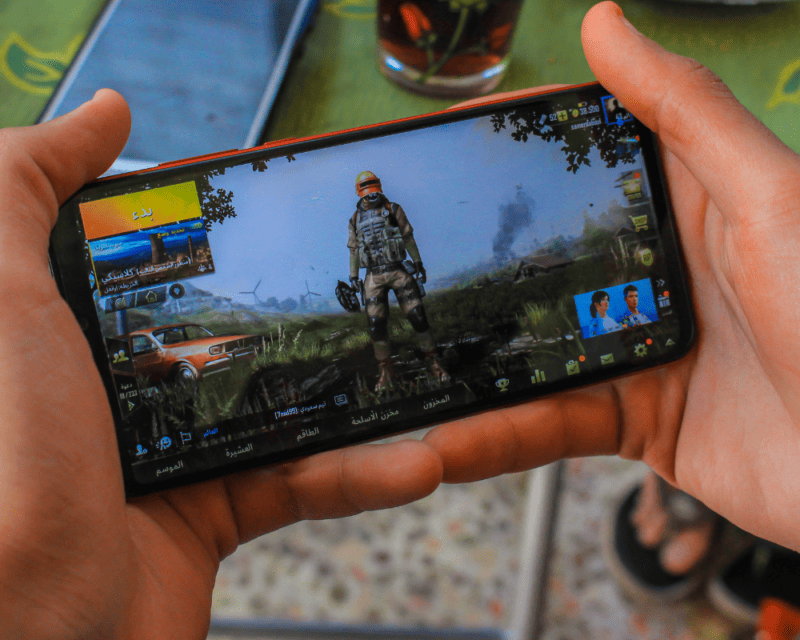You’ve seen it unfold right before your eyes. The shift from simple, arcade-style games to complex narratives pulls you in, making you a part of the story. Yes, we’re talking about the evolution of storytelling in video games, and it is a big part of the latest gaming news.
From the early days of Pong and Space Invaders, where the story was merely an afterthought, we’ve moved to games like The Last of Us and Witcher 3, where the narrative takes center stage. It’s a fascinating journey, one that we’ll explore in this article.
So, buckle up as we delve into the captivating world of video game storytelling, tracing its roots, its growth, and the exciting future that lies ahead.
Early Video Game Storytelling

The early video game era, characterized as the dawn of our topic, was a comparatively simple time.
Simple Plots and Limited Character Development
In their infancy, video games came with straightforward objectives and simple plots. The goal might be as clear-cut as saving a kidnapped princess or collecting as many points as possible. You didn’t have worlds to get lost in or characters with rich histories. Pac-Man, Donkey Kong, and Super Mario Bros are prime examples, with their mission being to clear a level or achieve the highest score.
During these early years, character development wasn’t nearly as crucial as it is now. Pac-Man was just a yellow circle who liked eating dots, and Mario was a plumber with a knack for stomping on turtles. Detailed backstories and vibrant personalities were not a priority, to put it mildly.
Text-based Adventure Games
However, as technology advanced, so did the narratives. Text-based Adventure Games emerged as a strong medium for storytelling in video games. Here, you were given a description of your surroundings and had to type in your actions. Games like Zork and The Hitchhiker’s Guide to the Galaxy took things up a notch, offering branching storylines, riddles, and puzzles.
These text-based games painted vivid pictures using only words. They relied on the player’s imagination, transporting them to far-off lands or claustrophobic cave systems filled with lurking dangers. It was a rudimentary but crucial step in the evolution of video game storytelling. Games started to become more than just distractions or pastimes; they began to provide a rich narrative experience, engaging players in a new and immersive way.
Advancements in Graphics and Technology

As we move forward exploring the evolution of storytelling in video games, it’s crucial not to overlook the advancements in graphics and technology. During the rapid progression of gaming, it became clear that technological evolutions significantly influenced the way stories are told in video games. This is not only about the games themselves but the platforms on which they’re played. Let’s delve into some important advancements.
The Introduction of Cutscenes
Back in the days when Pac-Man and Donkey Kong ruled the arcade scene, the idea of cutscenes was far-fetched. However, as technology advanced, developers started using cutscenes to push the narrative forward. Cutscenes are cinematic clips that typically play at critical points in a game to give depth to the plot or characters. This is a game-changer in the evolution of storytelling. It gave the characters a voice and context, enlivened the gaming environment, and made the game’s world more immersive.
Moreover, these cinematic sequences provided the developers with a way to relay the story directly to you, stepping away from the indirect and interpretive storytelling of the past.
Interactive and Branching Narratives
Let’s shift focus to one of the most exciting advancements in video game storytelling: Interactive and Branching Narratives. You’ve most likely experienced this if you’ve played modern games like The Witcher 3 or Mass Effect. These narrative structures bring an unparalleled level of immersion. They empower you as a player to influence the story arc and witness the consequences of your choices.
This is an exciting result of technological advancement. Now, games can deliver complex storylines that vary based on your decisions. This type of storytelling wasn’t possible in the early days of Super Mario Bros or Donkey Kong, where the narrative was linear. The evolution has indeed been remarkable. You’re no longer just a player but a part of the story. That’s the real charm of modern-day video games.
The Rise of Cinematic Experiences

With the advancement of technology, video games have become increasingly immersive. Cinematic experiences have taken center stage, transforming the landscape of video game storytelling.
Enhanced Graphics and Realistic Animations
Visuals play a crucial role in gaming. As technology evolves, the graphics and animations become more intricate and realistic. Unlike early video games characterized by 2D-pixel art, modern games are often described as interactive movies due to their high-quality 3D graphics. Your exploration of video game storytelling will reveal how these realistic animations pull you directly into the game world. With impressive visual effects and realistic depictions, the narratives feel lifelike, adding to your immersive gaming experience.
Emotionally Engaging Storylines
Not only did video games evolve visually, but they also refined their storytelling techniques. Video games started to feature emotionally engaging storylines that you could participate in and influence. Developers put more emphasis on character development, causing you to feel more connected to the characters. This shift laid the groundwork for video games to be considered as a form of art, making your exploration of this evolution even more fascinating. Games like “The Last of Us” and “Life is Strange” showcase deep emotional connections between characters. These storylines touch on real-world issues and force you to make choices, giving space for the emergence of multiple endings influenced by your decisions.
The trend of cinematic games has gained momentum over time. Noticing this, the gaming industry began investing in cutscenes or cinematic clips. These clips deliver significant advancements, intensifying the gaming experience with intriguing plot twists and turns and adding depth to character development.
The Role of Player Agency

In exploring the evolution of storytelling in video games, discussing the role of player agency is pivotal. This aspect has grown in significance with the gaming industry’s technological advancements. You can’t overstate its impact on how stories unfold and the immersive experiences players enjoy today. Player agency goes beyond graphics and animations – it dwells in their influence on the game’s narrative.
Player Choices and Multiple Endings
Arguably, the most compelling demonstration of player agency is player choices resulting in multiple endings. The notion that your in-game decisions can alter the game’s outcome has revolutionized storytelling. For example, games like Detroit: Become Human, Mass Effect and Until Dawn hinge on player decisions, providing diverse endings. This mechanic echoes the complexities of real life, where our choices often determine outcomes. It has introduced unpredictability and personal investment into gaming, enriching the experience and redefining stories in video games.
Non-linear Storytelling and Open-World Exploration
One cannot discuss the role of player agency without touching on non-linear storytelling and open-world exploration. These game design strategies allow players to dictate their journey, enhancing engagement and providing a personalized experience. Non-linear storytelling unlocks multiple threads to explore at the player’s discretion, and open-world games like The Elder Scrolls and Grand Theft Auto series have leveraged this to great effect. The result is an interactive, immersive experience that surpasses traditional, linear narratives. Players are no longer mere spectators; they’re active participants steering their unique journeys throughout the game.
The Impact of Storytelling in Modern Games
Today, storytelling in video games is more than just fancy graphics and advanced technology. It’s a medium that allows developers to weave intricate stories that resonate with players on a deeply personal level. This growth has been possible thanks to advancements in technology but also thanks to a new understanding of how stories can evoke emotions and create meaningful connections.
Character-driven Narratives and Player Empathy
The deeply emotive, character-driven narratives found in modern games are a far cry from the simple beginnings of the industry. As developers have started exploring the evolution of storytelling in video games more deeply, they’ve realized the power of creating characters that players can relate to.
When you’re playing a game with a well-developed, meaningful storyline, you’re not just observing a narrative; you’re living it. You experience victories, failures, and personal growth alongside your in-game avatar. A strong character development can create a deep empathy, enhancing the overall gaming experience.
For instance, games like The Witcher 3 and The Last of Us have been lauded for their emotive, complex characters who make morally ambiguous decisions, making players feel a greater empathy for them.
Blurring the Line Between Gameplay and Story
With the continuous evolution of storytelling in video games, the line between gameplay and story is becoming increasingly blurred. Conventional wisdom once held that the gameplay mechanics were separate from the story, serving as mere vessels to propel the narrative forward. Today, this couldn’t be more different.
Instead of being seen as competing elements, gameplay and story are now seen as the same. Everything you do in a game contributes to the narrative, from your choices to the world you explore. This interactive storytelling method has given rise to games like Life is Strange and Detroit: Become Human, where the narrative unfolds based on player choice, exploring complex themes such as identity, morality, and the human condition.
Conclusion
You’ve journeyed through the evolution of storytelling in video games, witnessing the transformation from simple text-based narratives to immersive, cinematic experiences. You’ve seen how graphics and technology advancements have given life to characters, making them more believable and emotionally engaging.
You’ve also seen the rise of player agency, with games allowing you to shape the narrative through your choices and actions. This has led to a more personalized gaming experience, blurring the line between gameplay and story.
Looking forward, the potential of VR and AI in video game storytelling is immense. With VR, you could physically engage with the story, while AI could further enhance player agency by dynamically shaping narratives based on your choices.
Indeed, the future of storytelling in video games is exciting and boundless, promising even more immersive and personalized gaming experiences. As technology advances, so will the narratives within the games you play, forever changing the landscape of video game storytelling.
